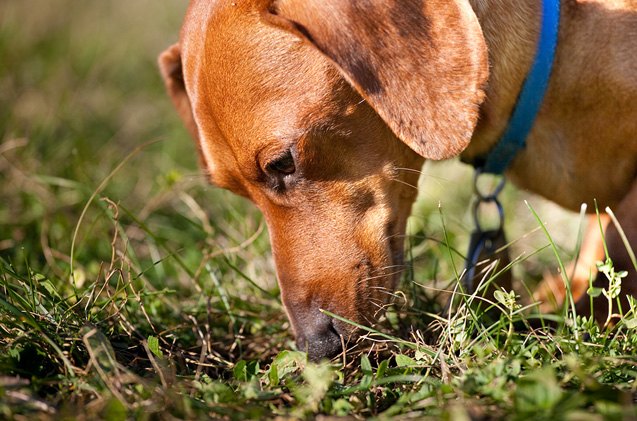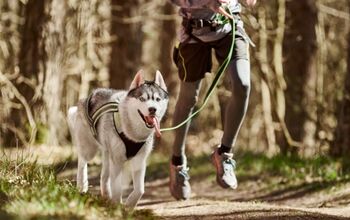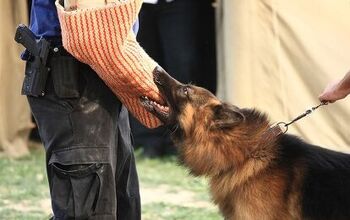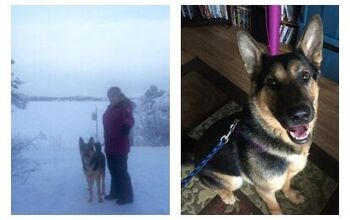What is Tracking Training for Dogs?

You probably already know that a dog’s nose is significantly more powerful than your own nose, but there are certain breeds of dog that have a particularly strong sense of smell – these are the best breeds for tracking and scenting.
Some of the most talented tracking dog breeds include bloodhounds, coonhounds, German shepherds, German shorthaired pointers, and Australian shepherd. If you have a tracking dog breed you should seriously consider tracking and scent training – even if you don’t intend to compete – because that is what your dog was made to do. Keep reading to learn the basics about tracking and scent training for dogs.
Related: What is Schutzhund Training for Dogs?
Start Early – Tracking Training for Puppies
Puppies are the most impressionable during the first three months of life – this is why early socialization and training is so important. When your puppy is still young it is also the perfect time to start laying the foundation for tracking and scent training.
Your puppy is like a lump of clay just waiting to be molded and he will respond particularly well to training exercises if you make them into a game. Hide and seek, for example, is a great example of a game that can also serve as preliminary tracking training for your puppy. Start off by hiding within your dog’s sight, then move progressively further away, finding more difficult hiding places each round. You can also play this game by hiding one of your puppy’s favorite toys so he has to track it down.
Related: 6 Bizarre Ways Our Dogs Talk to Us
Advanced Tracking and Scent Training
Once your puppy gets old enough for real training you can start making the transition from tracking games to real tracking work. This may sound difficult, but it is actually fairly easy – you don’t necessarily need any special training and all your puppy needs is his nose!
There are a variety of different methods you can try for tracking and scent training so don’t be afraid to try a few to see which one your puppy responds to best. To get started, all you have to do is lay tracks by dropping tiny food morsels for your puppy to follow. As your puppy gets used to the exercise you can start making the tracks longer and more complex – you can even get friends or family members to lay the tracks to add an extra layer of challenge for your puppy!
Here is a sequence you can follow to start with scent and tracking training:
- Choose an article for your puppy to find and keep a second identical article for your scent article – a sock is a great option because it is small and can be filled with food.
- Place a flag at the starting point of your track.
- Take a step forward and drop a tiny treat by your foot.
- Keep moving forward, taking small steps to ensure a strong scent trail, dropping tiny treats with each step.
- Walk for a distance of 10 to 15 feet in a straight line, placing two flags along the way.
- Place another flag at the end of the track along with the treat-filled sock – place the article about a foot away from the last flag.
- Move away from the track by jumping as far as you can off to the side (you don’t want to confuse your puppy by walking in a straight line off the track).
- Return to your dog and use the second sock to give him the scent – once he has it, let him start following the track!
This is the basic training sequence to teach your puppy how to track a scent. Some puppies will pick up on the exercise more quickly than others, so just pay attention to how well your puppy is doing and increase the difficulty in proportion to his rate of progress.

Kate Barrington is the loving owner of two cats (Bagel and Munchkin) and a noisy herd of guinea pigs. Having grown up with golden retrievers, Kate has a great deal of experience with dogs but labels herself a lover of all pets. Having received a Bachelor's degree in English, Kate has combined her love for pets and her passion for writing to create her own freelance writing business, specializing in the pet niche.
More by Kate Barrington























